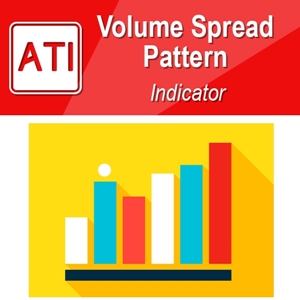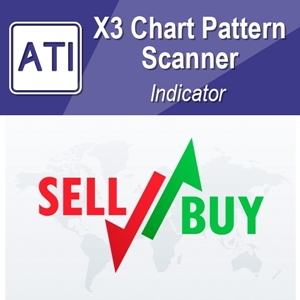Below is the Text Summary the Full PDF Article:
How to catch 1000 birds in Forex Market using Vacuum Zone Trading
Vacuum Zone in the Market
According to Financial Econometric Professor from Lancaster University Management School in the UK, the recent financial markets and trading environments were drastically changed comparing to 1980s. In old times like 1980s, a lot of traders including reputable ones, used paper charts to analyze stock markets. The tools used by modern Professional traders and investors are much more sophisticated nowadays because of the readily available electronic analytical tools. It seems that I have to agree that back then the trajectory of financial markets was less sophisticated than now. In Today’s market, every 1 pip movement in the instrument, the price simultaneously makes a lot of noisy trajectory confusing traders to guess what the real intention of the market is. This is probably because of many people are looking at different tools including support and resistance, daily pivot analysis, psychological level, technical indicators, economic news, statistical analysis, Elliott wave, etc. So the important question to ask here is that is it possible to spot some quiet price zone free or less influenced from all these different analysis? The answer is probably impossible because there is no one can perfectly master all different trading or analysis techniques. Even though someone might have mastered all the existing techniques on the earth, it will still take a lot of time to spot such an analysis free zone from the market. However one can still make some efforts to define such a Vacuum zone from financial market. In this article, we show some small efforts towards such an interesting attempt. We will mainly use combination of horizontal and diagonal support and resistance lines to do the task.
How to define Vacuum Zone in Financial Market
To define Vacuum Zone using support and resistance lines, it is required to use some sophisticated and automated tools can draw support and resistance. If you are trying to do this manually, it may take forever and we do not recommend. In our attempts, we will use our Price Breakout Pattern Scanner and Precision Support and Resistance Analysis. We will tell our price breakout pattern Scanner to detect all available diagonal support and resistance lines in the chart. Then we will ask the Precision Support and Resistance tool to detect all available horizontal Support and resistance lines. To do so, you need to display each pattern as support and resistance mode. Also make sure that you are setting Maximum Number of patterns to display to 20 or even more. So now price breakout pattern scanner will show 20 latest patterns in support and resistance mode.
Figure 1: Input setting for Price Breakout Pattern Scanner
Note that precision support and resistance tools blend both pivot lines and horizontal support and resistance lines automatically in its default setting. So you can attach it to the chart in the default setting. When you attach both price breakout pattern scanner and Precision Support and Resistance tool, you will see something like this in your charts. Depending on your trading experience, this chart may be very pleasant or may be very nasty. In my case, this is very pleasant as I can easily spot the vacuum zone which is free from both horizontal and diagonal support and resistance lines. Good things are that it is also easy to spot both entry and exit. Therefore as a trading strategy this is not too bad. For experience traders, this trading setup can be immediately ready to go with little bit of blend with their own support & resistance trading. For starters, it might be difficult to start immediately. In such a case, you can add some additional components to help your trading. For example, one might layout trend indicators to assist their trading setup. Or one might trade on fundamental news. Or you might blend both.
Figure 2: Diagonal and horizontal support and resistance lines drawn from Price Breakout Pattern Scanner and Precision Support & Resistance tool.
You can use some sophisticated trend analysis beside this vacuum trading setup. For simple demonstration, we just used 20 periods Bollinger bands to have some sense on what is the major trend at the moment plus to know how extreme current trend is moving. Upper and lower Bollinger Bands touching any horizontal and diagonal support and resistance lines will simply reinforce the importance of that support and resistance. So you should treat them with care. Make sure that if price move from one vacuum zone to another one, you will be trail your stop to protect your profits.
Figure 3: Bollinger bands added to the trading setup.
Now here we will introduce one more element in this trading setup. That is the market volatility monitoring. This will also answer the question when to enter the market. We want to enter the market when we are expecting good market volatility. Ironically to do so, it is important to detect quiet market first because highly volatility market comes after the quiet market. For this task, we will use Market Activity Index exclusively developed by our research team. Market Activity Index is available in Panel form. So you can monitor up to 21 currency pairs’ volatility. When you find some low volatility currency pairs, all you have to do is just click the cell to open the chart.
Figure 4: Market Activity Index Panel.
Once we opened the USDCAD chart, we will apply the same Vacuum Zone Trading setup as before. To do this fast, you will need to save these indicators as the template.
Figure 5: Save Vacuum Zone trading setup as template for future use.
So we will apply Price Breakout pattern Scanner and Precision Support & Resistance tool and Bollinger bands using template. As you can see at the minutes, USDCAD is quite bearish after the big bullish movements. The price is in the middle of Vacuum Zone. If you sell USDCAD, this would be counter trend trading. If you want to wait another opportunity, it is entirely up to you. However one thing you need to make sure is that if your reward covers your risk. If you are sure about that your rewards is sufficiently covering your risk, then you might enter. Otherwise, you will wait for next opportunity. In vacuum zone trading, your rewards and risk will be identified as the height of the Vacuum zone




